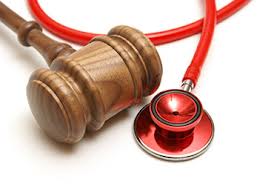
Florida passed Human Trafficking, Chapter 2019-152, Laws of Florida, which establishes new profession requirements including newly required signs, CE/CME, and more. The new law applies to DO, MD, DC, DPM, PT, Pharm D. and more. Healthcare professionals licensed by these Boards must complete one hour of continuing education (CE) on human trafficking and post a sign about human trafficking in their office by January 1, 2021. The course must be completed by January 1, 2021 and will count towards the required CE for renewal. The bill does not require that this course be taken again for future renewal cycles.
According to Wikipedia Human Trafficking refers to:
“……the trade of humans for the purpose of forced labour, sexual slavery, or commercial sexual exploitation for the trafficker or others.[1][2] This may encompass providing a spouse in the context of forced marriage,[3][4][5] or the extraction of organs or tissues,[6][7] including for surrogacy and ova removal.[8] Human trafficking can occur within a country or trans-nationally. Human trafficking is a crime against the person because of the violation of the victim’s rights of movement through coercion and because of their commercial exploitation.[9] Human trafficking is the trade in people, especially women and children, and does not necessarily involve the movement of the person from one place to another.[10][11]”
Title XLVI Chapter 787.06 Human trafficking.—
(1)(a) The Legislature finds that human trafficking is a form of modern-day slavery. Victims of human trafficking are young children, teenagers, and adults. Thousands of victims are trafficked annually across international borders worldwide. Many of these victims are trafficked into this state. Victims of human trafficking also include citizens of the United States and those persons trafficked domestically within the borders of the United States. The Legislature finds that victims of human trafficking are subjected to force, fraud, or coercion for the purpose of sexual exploitation or forced labor.
(b) The Legislature finds that while many victims of human trafficking are forced to work in prostitution or the sexual entertainment industry, trafficking also occurs in forms of labor exploitation, such as domestic servitude, restaurant work, janitorial work, sweatshop factory work, and migrant agricultural work.
(c) The Legislature finds that traffickers use various techniques to instill fear in victims and to keep them enslaved. Some traffickers keep their victims under lock and key. However, the most frequently used practices are less obvious techniques that include isolating victims from the public and family members; confiscating passports, visas, or other identification documents; using or threatening to use violence toward victims or their families; telling victims that they will be imprisoned or deported for immigration violations if they contact authorities; and controlling the victims’ funds by holding the money ostensibly for safekeeping.
As recently as Oct 26, 2020, NBC channel 8 news in Tampa reported the arrest of twenty-two suspects after multiple law enforcement agencies in Tampa Bay teamed up to crack down on human trafficking. Undercover detectives set up at an undisclosed motel and responded to online ads for commercial sex that had human trafficking indicators. When those responding to the ads showed up to the motel to engage in prostitution, they were screened to see if they were potential human trafficking victims. At the end of a two-day operation, police rescued three potential human trafficking victims and made 22 arrests. All three victims were adults.
The law requires that all course work must be completed by January 1, 2021 and will count towards the required CE for renewal. The bill does not require that this course be taken again for future renewal cycles.
Each healthcare provider licensed by one of the named Boards must post a sign regarding human trafficking in a conspicuous place accessible to employees by January 1, 2021. The sign must be at least 11 x 15 inches and in at least 32-point type. The sign must contain statutorily required language and be posted in English and Spanish. The Department has also provided Mandarin translations of these signs for use in offices where those languages are spoken. The links below contain signs that meet the statutory requirements when printed at the listed size.
- Human Trafficking (English/Spanish)
- Human Trafficking (English/Spanish/Mandarin)
- Human Trafficking (English/Spanish/Creole)
For more information please visit: http://www.flhealthsource.gov/humantrafficking/
References
- “UNODC on human trafficking and migrant smuggling”. United Nations Office on Drugs and Crime. 2011. Retrieved 22 March 2011.
- ^ Jump up to:ab “Amnesty International – People smuggling”. Amnesty.org.au. 23 March 2009. Archived from the original on 9 March 2011. Retrieved 22 March 2011.
- ^ Jump up to:ab “Child Trafficking for Forced Marriage” (PDF). Archived from the original (PDF) on 18 July 2013.
- ^“Slovakian ‘slave’ trafficked to Burnley for marriage”. BBC News. 9 October 2013.
- ^“MARRIAGE IN FORM, TRAFFICKING IN CONTENT: Non – consensual Bride Kidnapping in Contemporary Kyrgyzstan” (PDF). Archived from the original (PDF) on 15 April 2014. Retrieved 2 November 2016.
- ^“Trafficking in organs, tissues and cells and trafficking in human beings for the purpose of the removal of organs” (PDF). United Nations. 2009. Retrieved 18 January 2014.
- ^“Human trafficking for organs/tissue removal”. Fightslaverynow.org. 30 May 2010. Retrieved 30 December 2012.
- ^“Human trafficking for ova removal or surrogacy”. Councilforresponsiblegenetics.org. 31 March 2004. Archived from the original on 3 December 2013. Retrieved 30 December2012.
- ^MCLAUGHLIN. “What is Human Trafficking?”. www.unodc.org. Retrieved 6 September 2018.
- ^ Jump up to:ab Trafficking In Persons Report June 2019 (PDF) (Report). U.S. State Department.
